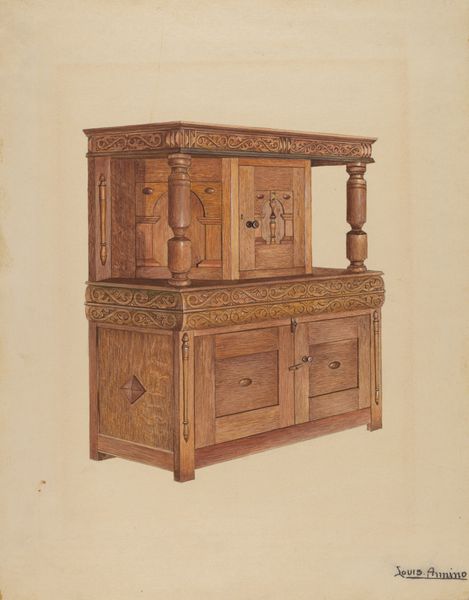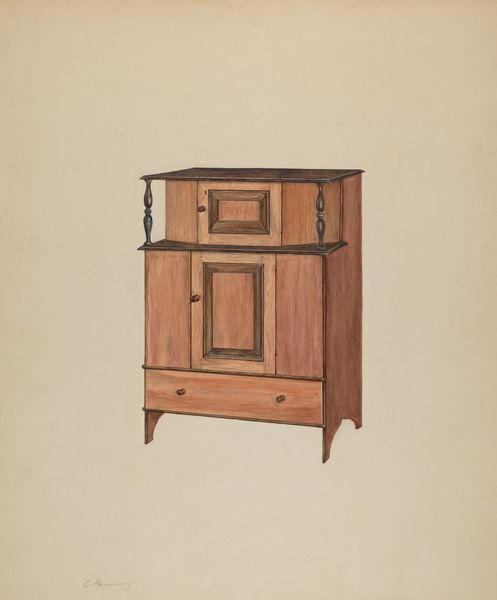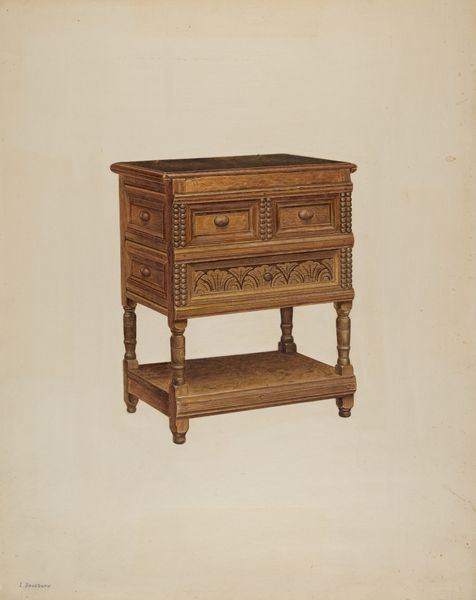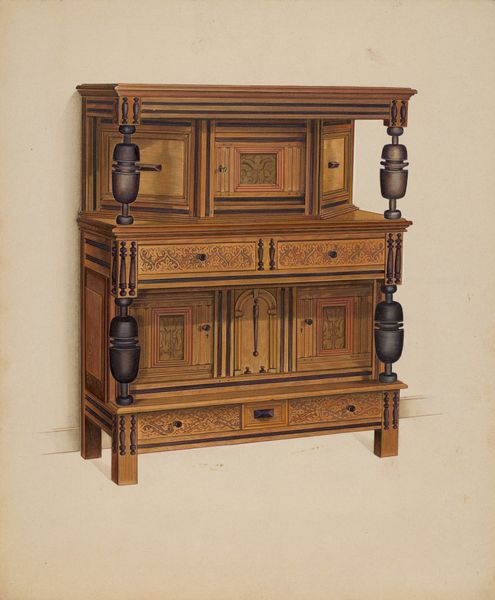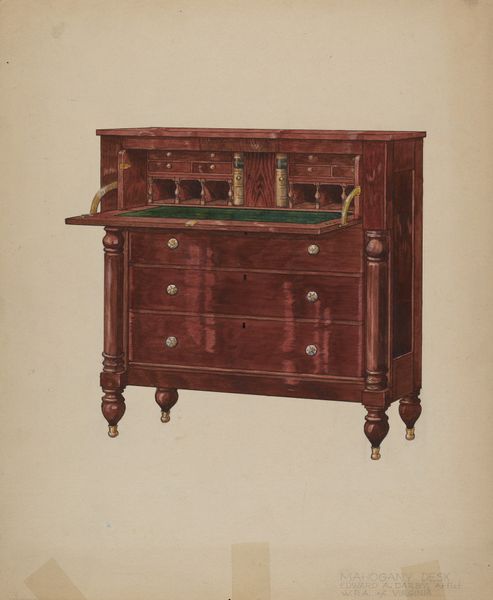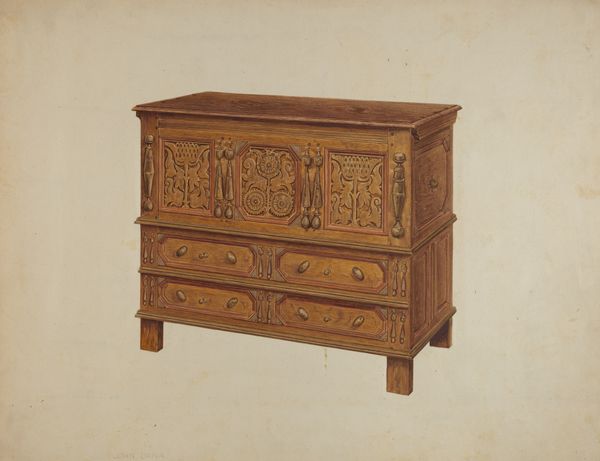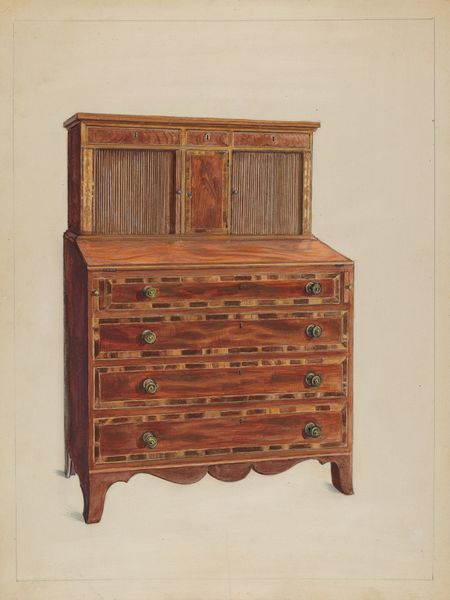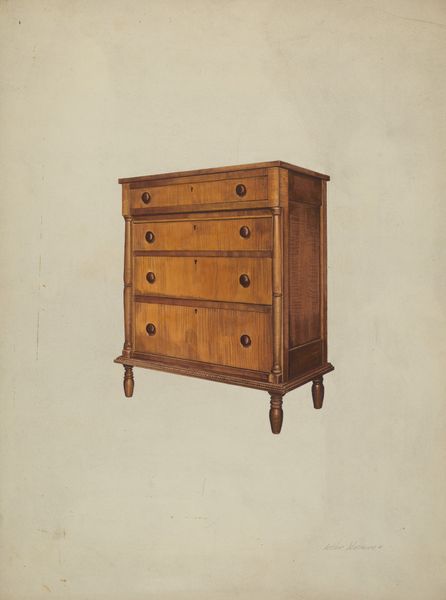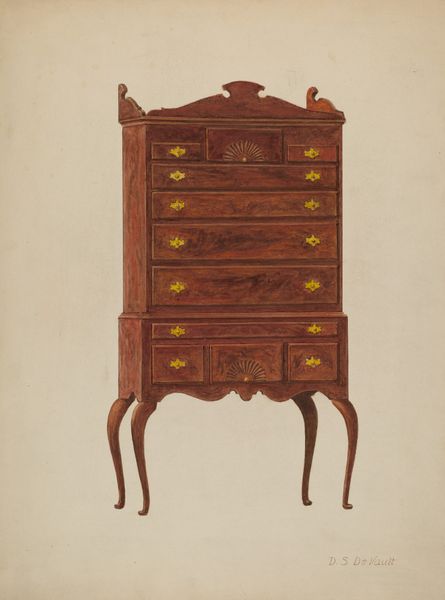
drawing, watercolor
#
drawing
#
watercolor
#
geometric
#
decorative-art
#
watercolor
Dimensions: overall: 29.2 x 22.5 cm (11 1/2 x 8 7/8 in.) Original IAD Object: 36"high; 36 1/2"wide; 21"deep
Copyright: National Gallery of Art: CC0 1.0
Curator: Here we have Ulrich Fischer's "Chest with Drawers," created around 1937, a watercolor and drawing on paper. What's your immediate impression? Editor: Austere. Rigid, even. It feels almost like an architectural rendering, yet the texture hints at warmth—like worn wood. I’m intrigued by the tension. Curator: It’s fascinating how furniture pieces were often depicted in this era, bridging fine art and the decorative arts. This watercolor invites us to consider the evolving social role of functional objects and their representation within cultural institutions. The artist encourages us to ask: does an object's artistic depiction elevate the design process, or does the act of creating such rendering highlight a gap between fine art and design? Editor: Exactly! And speaking of the design process, the visible brushstrokes are just as telling. Note the way he renders the wood grain—each line meticulously placed. We're not just seeing a chest of drawers, but witnessing the labor invested in representing it. Consider the materiality, the pigments, and paper - carriers of culture themselves. This piece is less about pure aesthetics and more about acknowledging art as work. Curator: Absolutely. Considering the period, this focus on domestic items reflects the social changes. Was this artist commissioned or part of a movement looking back at pre-industrial artisanship? Editor: The deliberate rendering of detail invites us to examine furniture making as part of a system of both material and symbolic value, I’d argue. This piece acts as a tangible record, one highlighting production value and labor rather than consumption, as was popular in many circles at the time. Curator: It makes you think about what the intended audience would have gleaned from this; the political and aesthetic contexts surrounding decorative art and how this imagery potentially promoted certain ideologies. Editor: For me, it all circles back to materiality. The artist isn’t just depicting; they’re also embodying, transforming everyday function into a form of silent commentary. Curator: It's quite profound, the way a simple piece of furniture and its artistic rendering can offer such rich insights into the cultural and social fabric of its time. Editor: A quiet rebellion of material itself. It is the beauty in the functional. A great example that proves value exists in how a thing is constructed, not just how it looks.
Comments
No comments
Be the first to comment and join the conversation on the ultimate creative platform.

